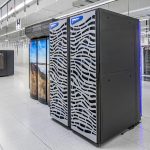 In the fast-changing world of business and technology, making computers work more efficiently is crucial for making new discoveries. A recent study from Carnegie Mellon University looked into whether a computer program called the Ford-Fulkerson algorithm, which helps solve network problems, can be made even faster using machine learning.
In the fast-changing world of business and technology, making computers work more efficiently is crucial for making new discoveries. A recent study from Carnegie Mellon University looked into whether a computer program called the Ford-Fulkerson algorithm, which helps solve network problems, can be made even faster using machine learning.
When dealing with complex software, it often takes a lot of computers and many hours of work to solve industry problems. By combining machine learning with problem-solving techniques, computers can analyze and process information more quickly. This not only speeds up their work but also saves energy because they use less power when they work more efficiently.
“We often observe some phenomenon in practice related to the performance of an algorithm, and we don’t totally understand why it’s happening. One example is the usefulness of warm starts,” the researchers explain. “If we can figure out why something is happening, then we can harness it and use it to our advantage.”
A warm start
What’s a “warm-start”? Think of it like this: when you start playing a new video game, you might not know the game or its challenges. But if you’ve played similar games before, you use what you’ve learned from those experiences to help you in the new game. That’s what we mean by a “warm-start.”
The researchers found that businesses have been using this kind of strategy with algorithms since the 1970s. In other words, they’ve been using what they know from past experiences to get a head start when tackling new problems.
“We wanted to explore if machine learning can be coupled with traditional techniques to unlock performance improvements,” the researchers explain. “In particular, we asked: Can predicted solutions be used as a starting point that results in software running faster?”
Image segmentation
They looked at a computer task called “image segmentation,” which is all about making a computer understand what’s in a picture and what’s around it. For example, this is crucial in self-driving cars to spot people and in medical scans to find tumors.
To check their idea, they used photos of things like people, animals, and objects and found that when they used their warm-start method, the computer did a faster job at figuring out what’s in the pictures compared to starting from scratch, like a cold-start.
“This paper offers a solution that can take advantage of good predictions and is robust to predictive errors,” the authors explain. “By building on the technology businesses have been using for decades, our findings show that this approach can improve computing speed while not sacrificing the accuracy or reliability of the algorithm’s predictions.”
The researchers highlight that there remain a few hurdles to clear in this journey, such as determining the best course of action when the predictions go awry. Additionally, they are keen on investigating whether similar methods could enhance the performance of different algorithms.
The study provides a compelling illustration of how a long-standing method can undergo a significant boost by adopting the warm-start approach. The forthcoming challenge lies in pinpointing other scenarios where this approach could yield performance improvements. Currently, the team is delving into local search algorithms, a widely-used technique in artificial intelligence and machine learning applications.